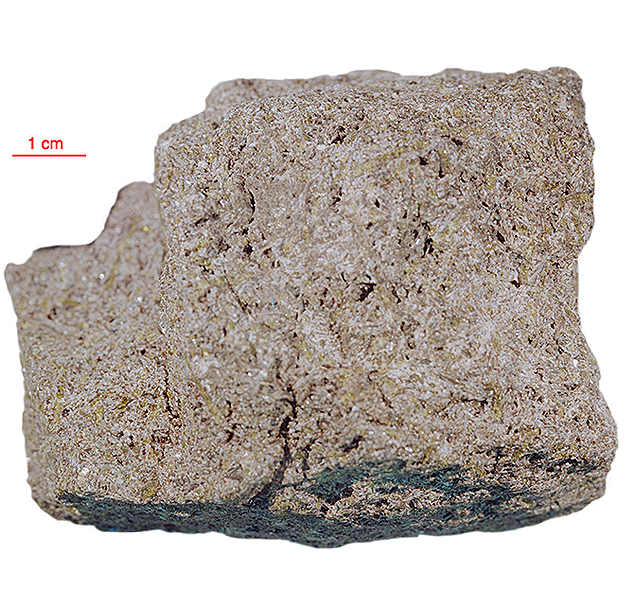
Fact sheet
15075 is a coarse-grained porphyritic pigeonite basalt with subophitic matrix. 15076 is a sister sample. Pyroxene and plagioclase compose 90% of the rock; accessories include chromite, ulvospinel, pyroxferroite, cristobalite (best seen in rotation 1, but one crystal visible in rotation 2), tridymite, ilmenite, metallic iron and fayalite. The pyroxenes are highly zoned and up to 6 mm long. The groundmass includes complex intergrowths of fayalite + Ca-rich pyroxene + silica which may be “breakdown products” of pyroxferroite.
The sample weighed 809.3 grams before analysis and has been dated at 3.45±0.025 billion years (Ar/Ar).
Further details of this and other Apollo samples are here: http://curator.jsc.nasa.gov/lunar/
The mounting resin of this thin section has deteriorated over time and now contains clusters of colourful dendrites (obvious in reflected light) within and around the thin section.
The Apollo 15 landing site was in the Apennine Highlands, and close to Hadley Rille — a long, narrow winding valley. Approximately 76 kg of lunar material, including soil, rock, core-tube and deep-core samples, were returned to Earth.
This mission was the first flight of the Lunar Roving Vehicle which allowed the astronauts to venture further from the Lunar Module than in previous missions. During three periods of extravehicular activity, or EVA, on July 31st, and August 1st and 2nd, Scott and Irwin completed a record 18 hours, 37 minutes of exploration, travelling 17.5 miles, in the first car that humans had ever driven on the Moon.
Apollo 15 was launched on 26 July 1971.






